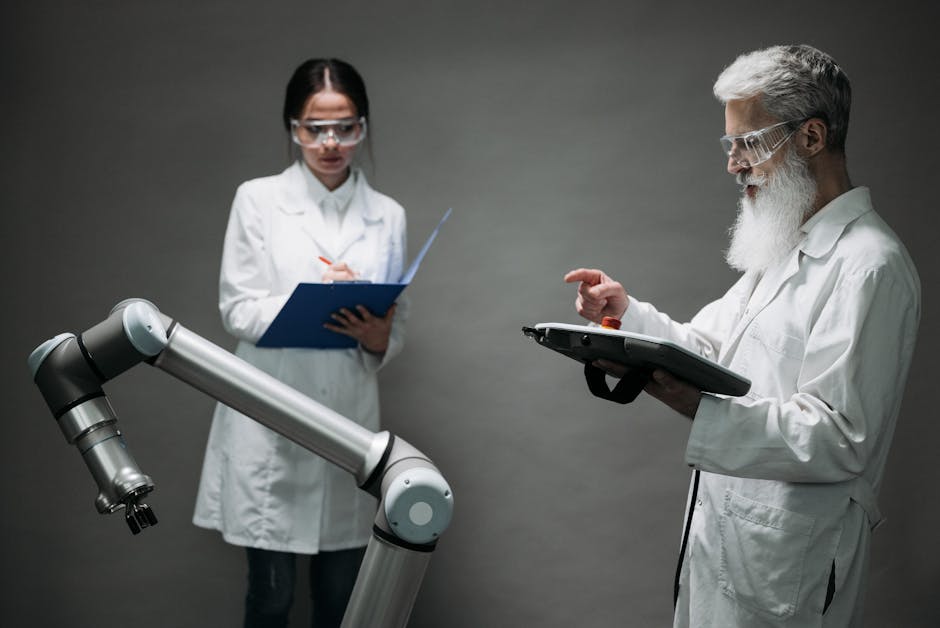AI in Data Science: Revolutionizing Analysis
Did you know that by 2025, the global data sphere is expected to reach 175 zettabytes? that’s a staggering amount of information! As we face this data deluge, artificial intelligence (AI) is playing a vital role in making sense of it all. From predicting trends to enhancing decision-making, AI is changing the game in data science.
What is AI in Data Science?

At it’s core, AI refers to machines designed to think and learn like humans. In data science, AI helps analyze vast amounts of data quickly and accurately. It identifies patterns and makes predictions, allowing businesses and researchers to draw valuable insights from data.
Imagine trying to find a needle in a haystack. That needle represents the insights hidden in your data. AI acts like a magnet, pulling those insights out efficiently.
How is AI Revolutionizing Data Analysis?

AI transforms data analysis in several impactful ways:
- Speed: AI algorithms can process data much faster than humans.
- Accuracy: AI minimizes human error, leading to more precise results.
- Scalability: AI can handle large datasets, making it adaptable for businesses of all sizes.
Lets dive deeper into these crucial aspects.
Why is Speed Important in Data Analysis?

Speed is everything in todays fast-paced world. Decisions need to be made quickly. Heres how AI helps:
- Real-Time Processing: AI can analyze data as it comes in, allowing businesses to respond immediately to trends.
- Automation: Routine tasks, like data entry, can be automated, saving time for important analyses.
For instance, consider a retail store that uses AI to track inventory levels in real time. If stocks are low, the system can alert managers instantly, enabling them to reorder supplies without delay.
How Does AI Improve Accuracy in Data Analysis?

Accuracy is vital when interpreting data. AI reduces errors and enhances reliability:
- Data Cleaning: AI can identify and correct mistakes in large datasets, improving overall quality.
- Predictive Analytics: AI algorithms analyze historical data to make accurate predictions about future trends.
For example, banks use AI to detect fraudulent transactions. By analyzing patterns of behavior, AI can spot anomalies, allowing institutions to prevent fraud before it occurs.
Can AI Handle Large Datasets? Absolutely!
As data grows, so do the challenges of analysis. AI thrives in this environment:
- Big Data Analysis: AI tools can sift through terabytes of information to find relevant insights.
- Machine Learning: This subset of AI learns from data and continually improves over time.
Consider social media platforms. They analyze vast amounts of user data to tailor content. AI helps them learn user preferences, delivering personalized experiences.
What Are the Common Applications of AI in Data Science?
AI has a wide range of applications in data science. Here are a few prominent examples:
- Healthcare: AI analyzes patient data for early disease detection, improving patient outcomes.
- Marketing: Businesses use AI to personalize campaigns based on customer behavior.
- Finance: AI helps in risk assessment and developing investment strategies.
- Transportation: AI facilitates route optimization and enhances autonomous vehicle technology.
These applications show how AI is not just a trend but a critical tool in various sectors.
What Challenges Does AI Face in Data Science?
Despite it’s advantages, AI in data science has challenges:
- Data Privacy: Handling sensitive data raises concerns about privacy and security.
- Bias: If the data used to train AI is biased, the results can be skewed.
- Complexity: Understanding and implementing AI technologies can be complicated for some organizations.
Addressing these challenges is crucial for the effective use of AI in data science.
How Can Organizations Implement AI in Data Science?
Organizations looking to integrate AI into their data practices should consider these steps:
- Start Small: Begin with a specific problem and pilot AI solutions.
- Invest in Training: Educate staff on AI tools and techniques.
- Choose the Right Tools: Select AI platforms that align with your organizations needs.
For example, a small business can start using AI chatbots to enhance customer service without overwhelming resources.
What Does the Future Hold for AI in Data Science?
The future of AI in data science looks promising. As technology evolves, so will the capabilities of AI:
- Advanced Algorithms: Expect more sophisticated algorithms that can interpret data better.
- Greater Integration: AI will integrate more seamlessly into everyday business processes.
- Enhanced Collaboration: AI will foster collaboration between machines and humans, leading to smarter decision-making.
As we embrace this future, AI will continue to shape how we understand and interact with data.
What Should Readers Take Away?
AI is revolutionizing data science, making analysis faster, more accurate, and scalable. As organizations increasingly leverage AI technologies, the potential for innovation grows. Here are key takeaways:
- AI enhances speed and accuracy in data analysis.
- It can handle large datasets efficiently.
- Organizations must address challenges, such as data privacy and bias.
- Investing in training and starting small can lead to successful AI implementation.
[p>As AI continues to evolve, so too will it’s impact on data science. Organizations must stay informed and adaptable to harness it’s full potential.
For more insights on AI and data science, check out [this article](https://www.datasciencecentral.com/ai-in-data-science-understanding-the-relationship/) that dives deeper into the relationship between these two fields.
In conclusion, AI is not just a buzzword; it’s a driving force in data science. By understanding and embracing these changes, individuals and organizations can unlock new possibilities and stay ahead in an increasingly data-driven world.



